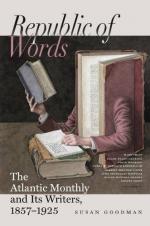Whatever Nat Turner’s experiences of slavery might have been, it is certain that his plans were not suddenly adopted, but that he had brooded over them for years. To this day there are traditions among the Virginia slaves of the keen devices of “Prophet Nat”. If he was caught with lime and lamp-black in hand, conning over a half-finished county-map on the barn-door, he was always “planning what to do, if he were blind”, or “studying how to get to Mr. Francis’s house.” When he had called a meeting of slaves, and some poor whites came eavesdropping, the poor whites at once became the subjects for discussion; he incidentally mentioned that the masters had been heard threatening to drive them away; one slave had been ordered to shoot Mr. Jones’s pigs, another to tear down Mr. Johnson’s fences. The poor whites, Johnson and Jones, ran home to see to their homesteads, and were better friends than ever to Prophet Nat.
He never was a Baptist preacher, though such vocation has often been attributed to him. The impression arose from his having immersed himself, during one of his periods of special enthusiasm, together with a poor white man named Brantley. “About this time”, he says in his Confession, “I told these things to a white man, on whom it had a wonderful effect, and he ceased from his wickedness, and was attacked immediately with a cutaneous eruption, and the blood oozed from the pores of his skin, and after praying and fasting nine days he was healed. And the Spirit appeared to me again, and said, as the Saviour had been baptized, so should we be also; and when the white people would not let us be baptized by the Church, we went down into the water together, in the sight of many who reviled us, and were baptized by the Spirit. After this I rejoiced greatly and gave thanks to God.”
The religious hallucinations narrated in his Confession seem to have been as genuine as the average of such things, and are very well expressed. It reads quite like Jacob Behmen. He saw white spirits and black spirits contending in the skies, the sun was darkened, the thunder rolled. “And the Holy Ghost was with me, and said, ’Behold me as I stand in the heavens!’ And I looked and saw the forms of men in different attitudes. And there were lights in the sky, to which the children of darkness gave other names than what they really




